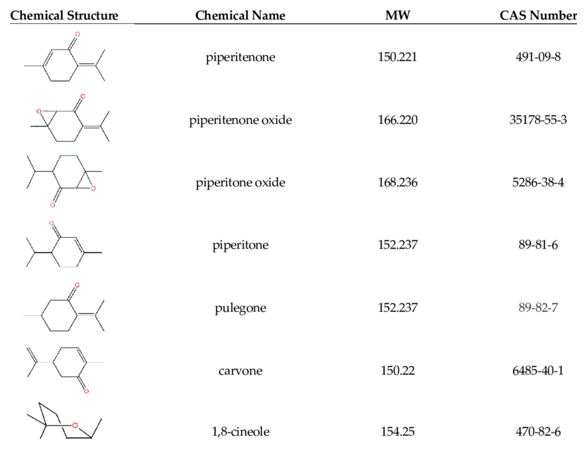Written by Nora Agir
Lots of plants were used in form of essential oils or dried leaves for healing, cooking. Herbs and spices produced from aromatic plants are largely used to enchanted food taste and palatability. Herbs are types of plants which leaves are used to enhance food taste, whether spices are identified as various aromatic products obtained from plants in the form of powder or seeds (basically any plant part).The aim of this report is to highlight the most popular and well known plants that were used as spices or herbs in Italy.
Carom Carvi – belongs to the family Apiaceae which originates in Europe.
Morphology of Carom Carvi –
Carum carvi is usually a biennial, 30 to 100 cm high plant with a fleshy, fusiform tap root. The stem is erect, angular, grooved, filled with latex, glabrous and branched from the ground up. The rosette leaves and the cauline leaves are glabrous and in part tri-pinnate. The lower pinna are typically crossed. Flower and Fruit: The main trunk and the side branches each terminate in a compound flowering umbel of 8 to 16 umbel rays. The epicalyx and calyx are almost non-existent. The florets are white or reddish and very small. The fruit is a schizocarp that is glabrous, oblong and elliptoid. It consists of 2 mericarps that are 3 to 6 mm long, sickle shaped, brownish with 5 lighter, angular main ribs (caraway seeds).
Traditional uses.
Caraway was used for gastrointestinal cramps and feelings of fullness, as well as nervous cardiac-gastric Complaints, in spasmodic gastrointestinal complaints, Flatulence, irritable stomach, indigestion, lack of appetite, Dyspepsia in adults, and in relieving flatulent colic of infants. It was also used as tranquilizer, diuretic, Emenagogue, and gastric stimulant, aphrodisiac, astringent, In the treatment of morning sickness, headache, to improve Liver function, in bronchopulmonary disorders, cough and as an analgesic. Vapor of caraway seeds is used to relief Lumbago and rheumatism. The seeds were also used for the treatment of scabies. Caraway was also used to improve lactation in nursing mothers.The essential oil is used as Constituent in mouthwashes and bath additives. And in perfumery, for scenting soap and as a parasiticide. It was commonly used as a flavorant in ice cream, candy, meat, cheese, condiments, soft drinks, and alcoholic, beverages.
An aromatic compound, glucoside and a glucide were isolated from the water-soluble portion of the methanolic extract of caraway fruit ( Carum carvi L.). Their structures were clarified as: 2-methoxy-2-(4′- hydroxyphenyl)ethanol, junipediol A 2-O-beta-D-
glucopyranoside and L-fucitol. The flavonoid constituents of caraway were
included quercetin-3-glucuronides, isoquercitrin, quercetin 3-0 caffeylglucoside, and kaempferol 3-glucoside. The nutritional analysis of Carum carvi seeds (100g) showed that they contained water 9.87 g, energy 333 kcal, protein 19.77g, total lipids 14.59 g, carbohydrates, by difference 49.90g, fiber, total dietary 38.0g, sugars, total 0.64g, Calcium 689 mg, Iron 16.23mg, magnesium 258mg, phosphorus 568mg, potassium 1351mg, sodium 17mg, zinc 5.50mg, total ascorbic acid 21.0 mg, thiamine 0.3606m, riboflavin 0.379mg, niacin 3.606mg, vitamin B6 0.360mg, folate 10µg, vitamin A (RAE) 18µg, vitamin A(IU) 363IU, vitamin E 2.50mg, vitamin, fatty acids, total saturated 0.620g, fatty acids monounsaturated 7.125g and fatty acids polyunsaturated. Besides aromatic effects it also showed anti cancer activity, antibiotic activity, antiprotozoal effects, insecticidal and molluscicidal effects and gastrointestinal effects.
Hawthorn as a wild plant is an important fruit for human health. In this study, it was aimed to determine some physical and chemical properties of common hawthorn which is native plant of middle Anatolia in Turkey. According to chemical analysis results, crude protein, crude oil, ash, ph, acidity, total phenol contents and antioxidant activity values were found to be 3.03%, 1.22%, 2.77%, 4.08, 1.56%, 9.35 mg g−1 and 67.62% respectively. Some mineral matter contents as K, P, Ca, Mg, Fe, Na and B values were found to be 16,273.88 mg kg−1, 1316.92 mg kg−1, 1263.86 mg kg−1, 934.87 mg kg−1, 62.20 mg kg−1, 57.06 mg kg−1and 42.28 mg kg−1 respectively. The values of mass, diameter, length, geometric mean diameter and sphericity of common hawthorn fruit were determined as 0.93 g, 11.37 mm, 12.25 mm, 11.65 mm and 0.95 at 68.98% (db) humidity respectively. In addition, fruit hardness, chroma (C*), hue angle (h*) of hawthorn was found as 1.21 N, 28.94 ve 16.19 under same humidity respectively. According to study results, it can be concluded that the hawthorn fruits are admirable natural food for human nutrition, and it can be considered as reference for the future researches.
The essential oil from aerial parts of Crithmum maritimum L. (Apiaceae) growing wild in Antalya and Mersin, Turkey, was isolated by hydrodistillation and obtained in a yield of 0.17 and 0.19% (v/f w), respectively. The oil composition was analyzed by GC and GC-MS. Nineteen and twenty one compounds, accounting for 98 and 97% of the oils, were identified. The former oil was characterized by a high content of β phellandrene (30%) and thymol methyl ether (25%), the latter by γ-terpinene (24%) and dill-apiole (21%). Evaluation of the antibacterial activity showed that the oils have a similar, appreciable activity, mostly against Gram+bacteria.
Calamintha:
The genus calamintha mill. (calamint in english) includes aromatic plants belonging to the Lamiaceae family, which is well represented and widespread all around the mediterranean region. Numerous members of this family are used as spices, and are also employed in folk medicine in
Diverse traditions. Calamintha species are medium to large size erect herbaceous perennials, sometimes woody at the base, represented by eight species distributed in Europe, eastern Mediterranean region, central asia, north Africa and America. The number was as high as 30 before revisions in taxonomy, leaving a lot of synonyms in other lamiaceae genera such as acinos miller, clinopodium l., micromeria bentham and satureja l. For this reason, the use of chemotaxonomic markers is essential to better differentiation of these genera.

Calamintha also been widely used against insomnia, depression, convulsion and cramps and for the treatment of respiratory and gastroenteric diseases. An infusion of leaves is employed to treat neurovegetative distony and epilepsy, and its eupeptic and carminative effects improve digestion. In several parts of Sicily it is used for the disinfection and cicatrization of wounds. Its use against gout, cough up slime and an external application of the leaves against hip pains, has also been reported. As a result of its antiseptic and cicatrizing activity, it is used on insect bites and wounds. The plant has been traditionally used as a flavoring agent, and its EO is used in cooking as an aromatic factor and also to improve the flavor and fragrance of several pharmaceutical products. It is also used as a spice in the Italian cuisine where it is called mentuccia or nipitella.
